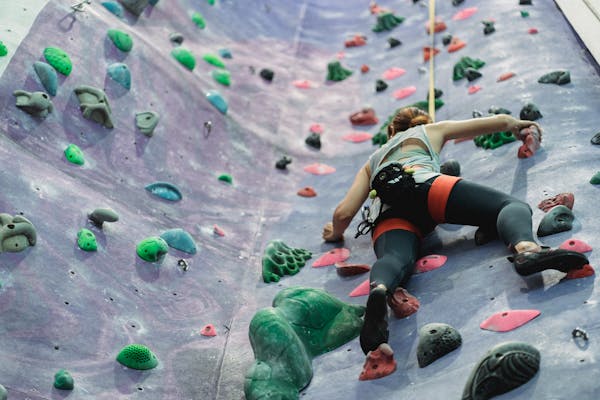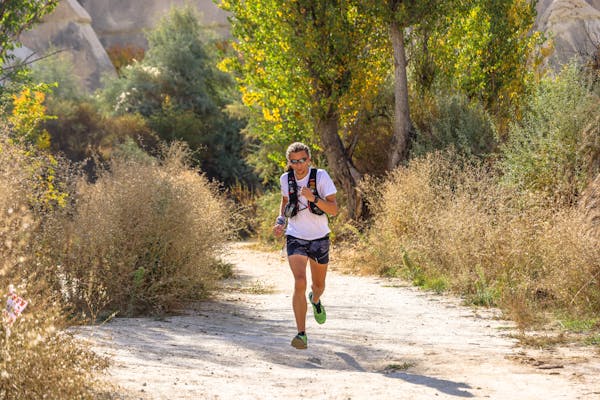How to Train for Hiking. Training for hiking is an essential step toward a satisfying and safe adventure on the trails. Hiking involves different terrain, changing elevations, and varied conditions, all of which bear a combination of strength, abidance, and internal adaptability. This companion will walk you through each aspect of hiking medication, from physical training to gear rudiments, to ensure you’re ready to conquer the trails.
Why You Need to Train for Hiking
Hiking may feel straightforward, but it’s a physically demanding exertion that challenges your body and mind. Training not only builds the stamina and strength necessary for hikes of any distance, but it also reduces the trouble of injuries.
Training equips you to handle steep inclines, rugged paths, and extended ages of exertion. In addition, medication makes your hiking experience more pleasurable and less tiring, allowing you to appreciate the decor and adventure without fatigue holding you back.
Step 1 Assess Your Fitness Position

Before diving into a training program, assess your current fitness position to knitter your medication. You can do this by
- Assessing Cardio Fitness Try a brisk 30- 30-nanosecond walk and see how you feel. However, it may indicate you’ll need to concentrate more on cardiovascular abidance If you’re breathing heavily.
- Checking Lower Body Strength Test your leg strength with exercises like syllables and lunges. However, it’s a sign to work on erecting leg and core strength, If these are delicate.
- Examining Balance and Inflexibility Simple balance exercises, like standing on one bottom for 30 seconds, can help you assess your stability. However, incorporating inflexibility and balance exercises into your training is essential, If you find it grueling.
Cardio Exercises for Hiking Abidance
Cardiovascular abidance is the foundation of hiking, as you’ll need a strong heart and lungs to handle nonstop exertion, especially at advanced mounds. They are effective cardio exercises to make your abidance
- Walking and Jogging launch by incorporating brisk walking or jogging into your routine. Aim for at least 30 twinkles, 3- 5 times per week, gradationally adding speed and distance.
- Incline Treadmill exercises Walking on a grade or routine simulates the uphill sections of hiking trails, erecting leg strength and abidance. Begin with a 5- 10 grade for 20- 30 twinkles.
- Stair Climbing Stair exercises are excellent for erecting cardiovascular strength while targeting the leg muscles demanded for hiking. However, try a stair rambler machine, If you don’t have access to stairs.
- Cycling and Rowing Both cycling and rowing give effective low-impact cardio training that builds abidance while keeping your joints safe.
Strengthening Lower Body and Core Muscles
Strong legs and core muscles are essential for hiking on uneven terrain and carrying gear.How to Train for Hiking These exercises concentrate on the major muscle groups used during hikes
- Syllables and Lunges Syllables and jabs are foundational exercises for lower body strength. Perform 3 sets of 10- 15 reps, 2- 3 times per week. For an added challenge, try weighted syllables or lunges with dumbbells.
- Step-Ups Step-Ups mimics the movements of climbing. Use a sturdy box or bench, stepping up with one bottom at a time. Complete 3 sets of 10- 15 reps per leg.
- Shin Raises Strong pins to support stability on inclines and rough terrain. Do shin raises on a stair or step, performing 3 sets of 15- 20 reps.
- Planks and Side Planks Planks strengthen your core and help with balance, which is pivotal on uneven paths. Hold each plank position for 30 seconds to 1 nanosecond, and aim for 2- 3 sets.
- Russian Twists This core exercise builds rotational strength, supporting better stability. Sit on the bottom, lean back slightly, and rotate your torso from side to side while holding a weight. Aim for 3 sets of 15- 20 twists.
Inflexibility and Balance Exercises

Inflexibility and balance training prepare you for challenging terrains and help injuries by perfecting your body’s range of stir and collaboration. How to Train for Hiking. Then are some crucial exercises
- Yoga improves both inflexibility and balance, which can reduce your threat of cascade and make trail navigation easier. Poses like Downward Dog, Warrior I and II, and Tree Pose are particularly salutary.
- Dynamic Stretching Warm up with dynamic stretches like leg swings, hipsterism circles, and lunges. These movements mimic hiking movements, helping to prepare muscles and joints for action.
- Single-Leg Balancing Stand on one leg for 30 seconds to 1 nanosecond, also switch to the other leg. To make it harder, try closing your eyes or balancing on an uneven face.
- Ankle Circles and Toe Touches Ankle strength is essential for hiking on rocky or uneven paths. Perform ankle circles and toe touches to ameliorate ankle inflexibility and strength.
Mental Preparation for Challenging Hikes
Hiking frequently requires internal abidance, particularly on long or emphatic trails. How to Train for Hiking. Preparing mentally for a hike can enhance your experience and make grueling sections more manageable.
- Fantasize the Hike Spend time imaging the hike, from the starting point to the end. Picture yourself diving into tough spots and imagine how you’ll feel at each stage.
- Figure Confidence Gradationally Begin with lower hikes and gradationally progress to more delicate trails. Completing lower challenges helps build confidence and internal adaptability for longer hikes.
- Practice awareness Hiking frequently requires tolerance and calmness, especially when trails come delicate. rehearsing awareness or contemplation can ameliorate focus and make you more present on the trail.
- Set mileposts Breaking a hike into lower parts can make it feel more attainable. Set internal mileposts, similar to reaching a certain view or elevation, to maintain provocation throughout the hike.
Training Tips for Steep and Rocky Trails
Steep inclines and rocky terrain are common on hiking trails, and specific training can help you handle these conditions more comfortably
- Hill Training If you have access to hills, incorporate hill sprints or grade walking into your workouts. However, use a routine with a steep grade, If hills aren’t available.
- Trail Practice Whenever possible, practice on factual trails to make comfortable with uneven shells and inclines. Hiking on varied terrain helps develop collaboration and balance.
- Pack Training Practice with a weighted pack to pretend the gear you’ll carry on the trail. Start with a lighter cargo and gradually increase the weight to prepare your muscles and back for the added strain.
- Plyometric Exercises Plyometric exercises like box jumps and jumping lunges help make explosive strength, which can ameliorate dexterity and power when navigating rocky terrain.
Essential Gear to Use During Training

The right gear can make your training more effective and prepare you for the specific conditions you’ll face on the hike. How to Train for Hiking. Then’s a list of rudiments
- Good Quality Hiking Shoes Invest in hiking shoes or thrills that give support, especially around the ankles. Proper footwear is essential to reduce the threat of injury on trails.
- pack with Weight To pretend carrying gear on a hike, use a pack filled with weights or gear. A weighted pack will help build strength in your legs, back, and shoulders.
- Touring Poles Using touring poles during training can ameliorate balance and provide the support you’ll need on trails. They’re also helpful for rehearsing descents on steep inclines.
- Humidity-Wicking Clothing Comfortable, humidity-wicking clothes will keep you dry and help chafing during both training and the hike itself. conclude for layers that are easy to acclimate for different rainfall conditions.
- Hydration Pack or Water Bottle Staying doused is pivotal, especially during long hikes. Use a hydration pack or water bottle to stay harmonious with your water input during training.
| Section | Focus | Purpose |
| Introduction | Summary of why training for hiking is essential | Emphasize the importance of material preparation to enhance the hiking experience and minimize injury hazards. |
| Why You Need to Train for Hiking | Spotlights the benefits of hiking training | Explain why hiking training is crucial, protecting stamina, strength, and overall enjoyment. |
| Step 1: Assess Your Fitness Level | Steps to Set Personal Fitness Readiness | Guide readers in evaluating their existing fitness to tailor a suitable training plan. |
| Cardio Workouts for Hiking Endurance | Cardio exercises to build perseverance | Provide specific cardio exercises to improve heart and lung capacity for sustained activity. |
Conclusion
Training for hiking is an investment in both your physical and internal well-being. By fastening cardiovascular fitness, strengthening crucial muscles, perfecting inflexibility, and using the right gear, you can prepare for the unique demands of the trail. Flashback, hiking readiness isn’t just about being physically strong; it’s also about having the internal adaptability to navigate challenges.
As you train and watch your abidance ameliorate, your confidence will grow, making each hike more pleasurable and satisfying. With the right medication, you’ll be ready to embrace the adventure, conquer grueling trails, and enjoy the beauty of the outside. So, lace up your thrills, pack your gear, and start training moment for a successful hiking experience!
FAQs
1. How long should I train before a big hike?
The training period depends on the difficulty of the hike and your current fitness position. For a moderate day hike, training for 4- 6 weeks should be sufficient. For a multi-day hike, end for 2- 3 months of harmonious training.
2. How frequently should I train per week?
Training 3- 5 times per week is ideal. This includes a blend of cardio, strength training, inflexibility exercises, and practice hikes.
3. Do I need to carry a pack during training?
Yes, carrying a pack during training helps make strength and abidance for the factual hike. Start with lighter cargo and gradually increase the weight as you progress.
4. Should I train outside or in a spa?
Both surroundings have benefits. out-of-door training on trails is ideal for bluffing real hiking conditions. still, gymnasiums offer outfits like rotes and weights, which are helpful for structured cardio and strength training.
5. Is it necessary to take rest days?
Yes, rest days are important for recovery and muscle growth. Overtraining can lead to fatigue and damage, so it’s important to balance drill days with rest days.


[…] numerous players, these suggestions produce roadblocks that disrupt their inflow. Without the right approach or knowledge, frustration […]
[…] hiking training program PDF offers a accessible way to pierce your fitness plan anytime, anywhere. You can keep it on your […]